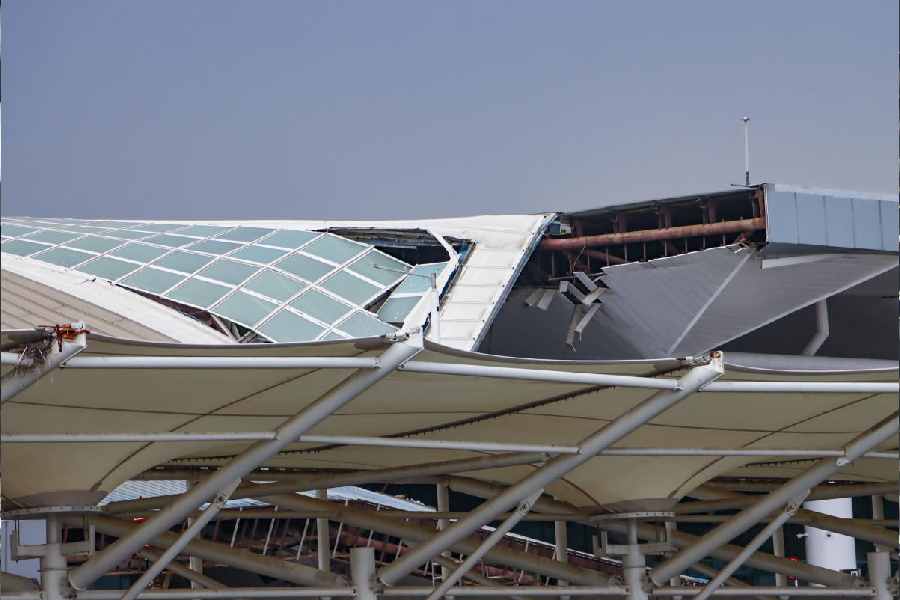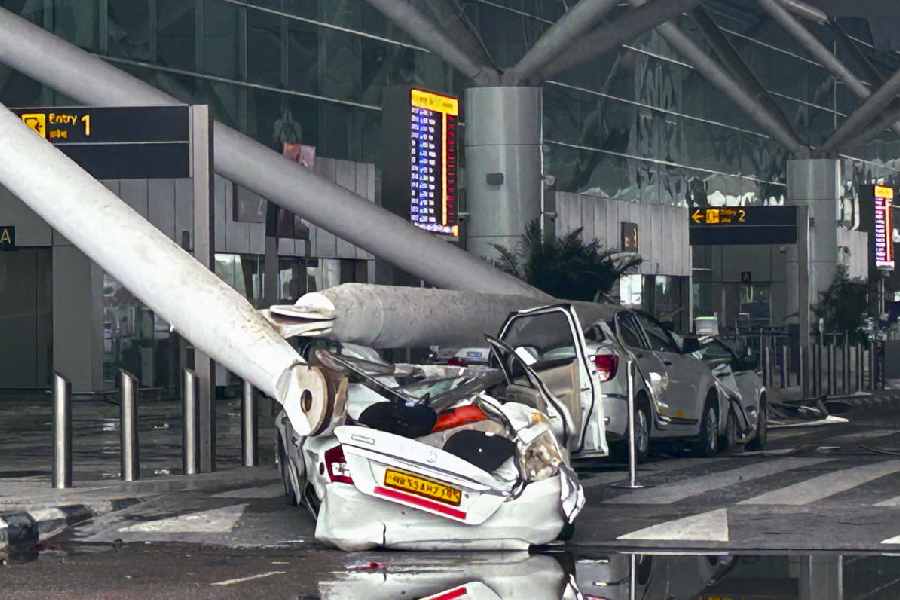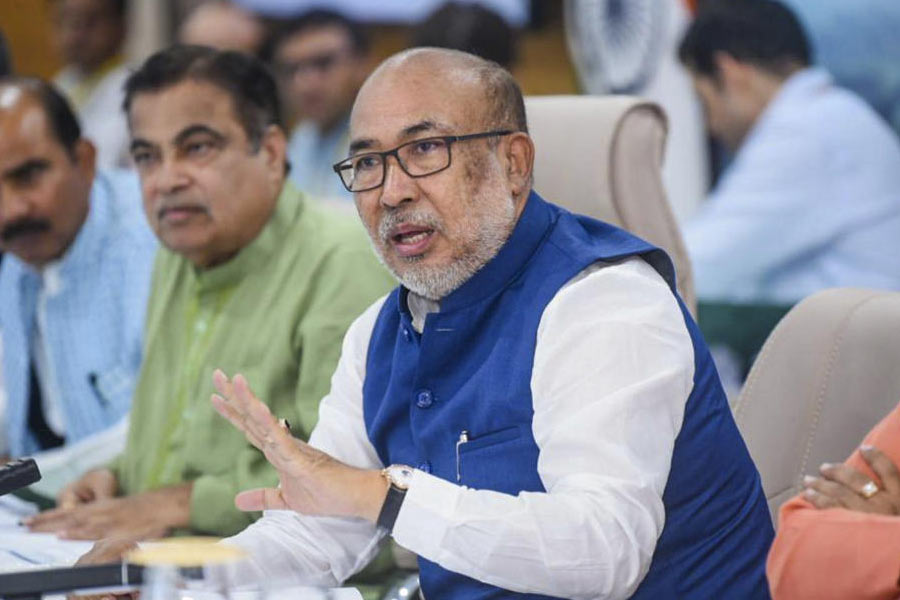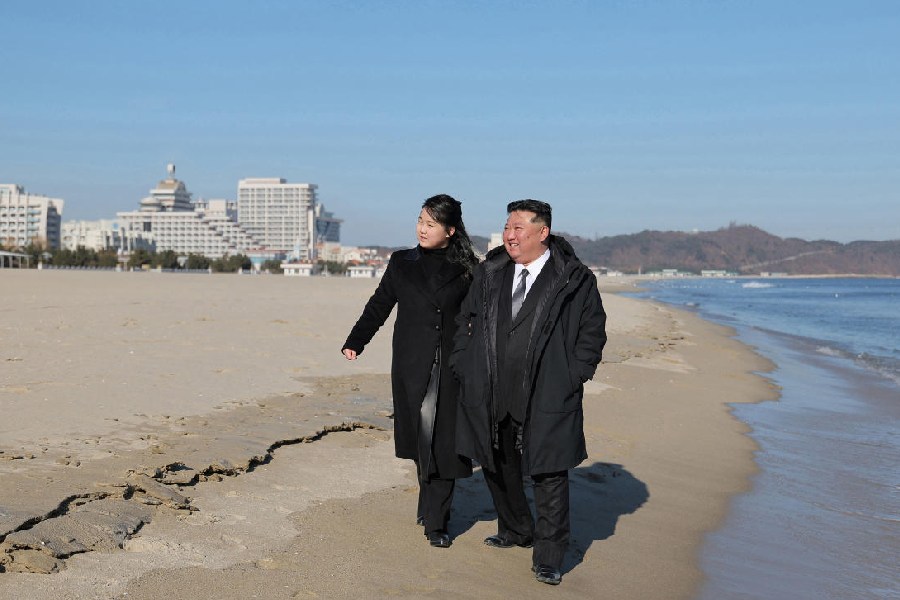The structural failures that have triggered the back-to-back airport canopy collapses in Jabalpur, Delhi and Rajkot demand detailed investigation, sections of structural engineers said on Saturday, challenging the narrative blaming the failures on excessive rainfall.
Each airport canopy collapse — Jabalpur on Thursday, Delhi on Friday and Rajkot on Saturday — was preceded by or occurred during heavy rainfall. But engineers say the excessive rainwater would by itself have, at its worst, exacerbated the underlying issues of concern that resulted in the catastrophic structural failures.
Authorities have sought to link the failures to heavy rainfall. The Jabalpur airport director Rajeev Ratna Pandey, for instance, told the PTI news agency that the canopy had collapsed after water accumulated over it because of the rain. “It ripped under the weight of the water and the water fell with great force on a car.”
Structural engineers, however, believe there are lessons to be learned from each of the three failures.
“Rain or water load should not be a challenge for either steel or concrete structures,” Sangeeta Wij, a former vice-president of the Indian Association of Structural Engineers (IASE), an apex professional body, told The Telegraph.
Large structures are typically constructed from steel sections with fixed or hinged joints and one possible line of investigation, she said, would be to focus on the joints. There are multiple ways to execute the joints — through welding, bolts or connectors.
“Joints need to be executed with perfection — execution needs to match the original design intent. And lack of appropriate execution can make the joint vulnerable,” she added.
Under heavy rain or strong wind conditions, Wij said, a vulnerable joint may be unable to absorb the ballooning effect from the wind and could cause structural instability that could lead to a collapse.
Poor maintenance is another possible source of trouble, said another structural engineer who is an associate professor of civil engineering in a government academic institution.
“Imagine a situation where a joint section is rusted or damaged in some other way. Heavy rain might then push the damage beyond its tipping point,” the engineer, who requested anonymity, told this newspaper.
“Rainwater is not directly responsible but it could act on an already weak area. Adequate maintenance and timely repair could prevent such failures.”
Wij and others in the structural engineering community are hoping the airport canopy failures would prompt greater introspection about what to prioritise during construction projects that they say are increasingly executed through engineering procurement construction (EPC) contracts and in exceedingly tighter time schedules.
“Sometimes, under EPC contracts, the focus seems to be first on the cost, then on aesthetics, and then on structural safety,” said Wij.

Damaged roof of the Indira Gandhi International Airport's Terminal- 1, in New Delhi, Saturday, June 29, 2024. Operations at the Terminal 1 have been suspended following a roof collapse incident on Friday that killed one person and injured six others. PTI
Some engineers say the absence of regulatory oversight on the practice of structural engineering keeps a window open for “unscrupulous engineers” to prioritise the contractors’ demands over structural safety.
The IASE, in a quarterly newsletter titled Crosfall (Confidential Reporting of Structural Failures and Lessons Learnt), has since July 2022 analysed several incidents — the failure of a precast arch over an expressway, the collapse of a canopy over a railway platform, and the collapse of a 95m bridge, among others.
“In our country, more often than not, the system of review of structural designs and drawings by senior structural engineers is missing,” an anonymous engineer had flagged two years ago in Crosfall.
The analyses in Crosfall have identified poor structural design, a mismatch between design and execution, and hasty construction among the causes of the various failures studied.
“Most developed and developing countries have set up regulatory bodies such as engineering councils for their structural engineers. Engineers need to pass an exam and obtain licences, and undergo periodic trainingto maintain their licences,” Wij said.
“We don’t have this. A much-awaited Engineers Bill will bring greater accountability and recognition to the profession, ensuring greater emphasis on structural safety.”











